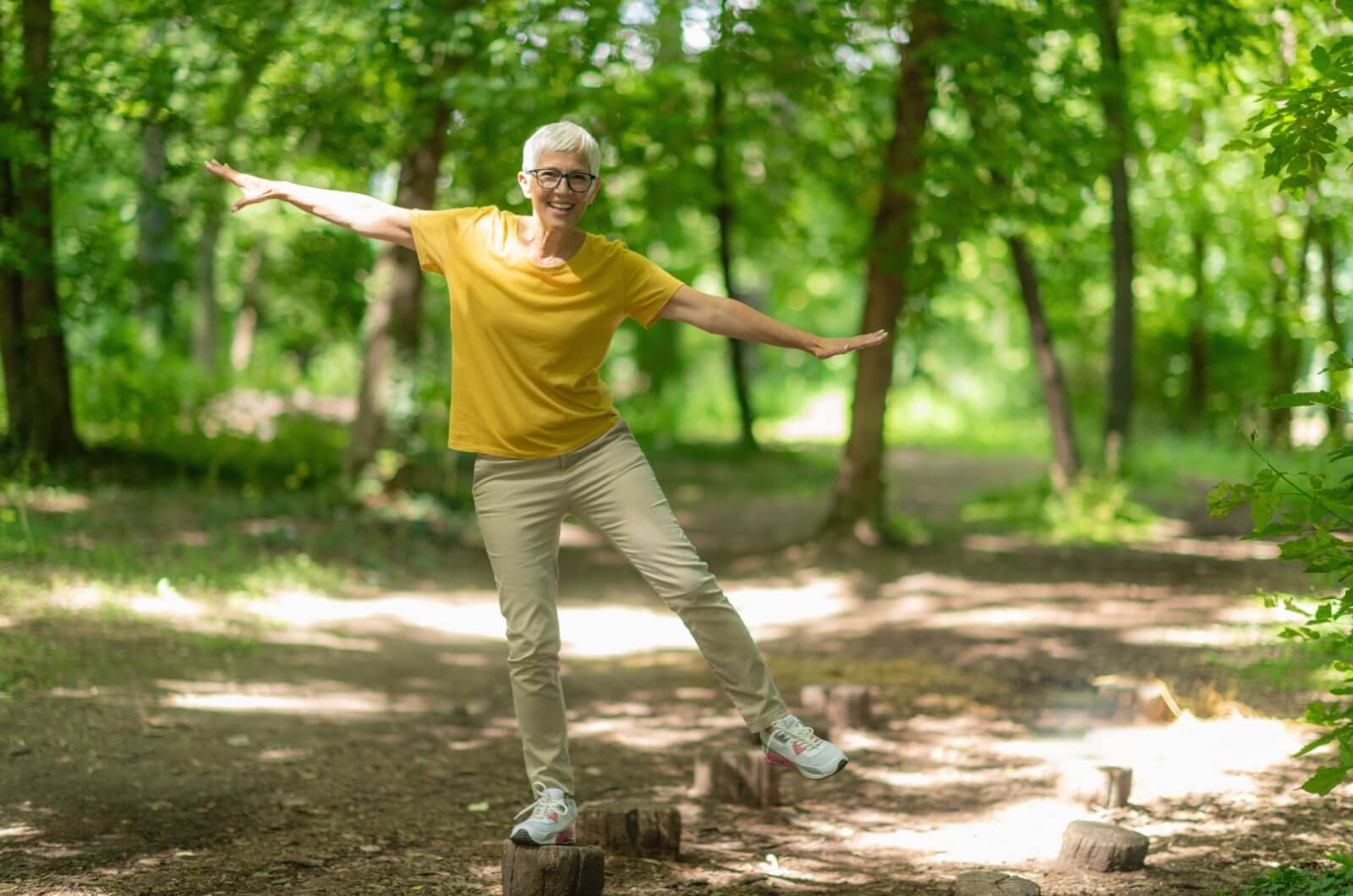As we age, maintaining balance can become a challenge. Good balance is crucial for older adults because it can contribute to strength and stability, preventing falls and injuries. Stability also helps maintain overall independence when performing daily tasks.
Some ways to help seniors improve their balance include:
- Physical exercises and activities
- Home modifications to promote safety
- Technology and tools to work on stability
- Regular medical check-ups
- A supportive environment
Assisted living communities help older adults remain independent while knowing that support is available for everyday tasks.
Importance of Balance in Seniors
Balance plays a fundamental role in the lives of older adults, required to independently perform daily activities like walking, getting out of bed, and even reaching for items on a shelf.
Good balance can significantly enhance overall health and quality of life. Conversely, impaired balance can increase the risk of falls and injuries in older adults.
Stability allows older adults to move confidently and safely and reduces the risk of falls and injuries. Certain exercises and routines can help maintain good balance while also improving strength, posture, coordination, and agility. Purposefully improving stability can make it easier for older adults to engage in physical activities and maintain an active lifestyle.
Causes of Reduced Balance in Seniors
Several factors and conditions contribute to reduced balance in older adults:
- Aging
- Changes in vision
- Changes in walking
- Slower reflexes
- Arthritis
- Cardiovascular issues
- Medications
Understanding these causes is vital for addressing balance issues effectively.
Signs of Poor Balance in Seniors
Recognizing the signs of poor balance in older adults is essential for early intervention. Physical signs of balance problems to watch for include:
- Unsteady walking
- Frequent tripping or stumbling
- Difficulty standing up from a seated position
- Swaying while standing
Older adults with poor balance may avoid certain activities and gradually adopt a sedentary lifestyle, weakening their muscles. This creates a cycle where reduced physical activity further worsens balance issues.
Ways to Help Seniors Improve Their Balance
Fortunately, there are ways to help older adults improve their balance.
Incorporate Physical Exercises & Activities
Incorporating physical exercises and activities into daily routines is one of the most effective strategies to improve leg strength, coordination, and overall balance. Simple balance exercises for older adults can include:
- Standing on one leg
- Heel-to-toe walking
- Tight-rope walking
- Weight shifts
- Rock the boat
- Back leg raises
Home Modifications
Making intentional modifications to an older adult’s home can help balance problems, reduce fall risks, and create a safer environment. Installing grab bars in the bathroom and near the front door, removing tripping hazards like loose rugs, and good lighting throughout the home are simple yet effective measures. Using non-slip mats and securing furniture can further enhance safety for older adults.
Technology & Tools for Balance Improvement
Tools and technology can support older adults and improve their balance. Various assistive devices, such as canes, walkers, and balance boards, can provide stability and support.
Emerging technologies for balance training and monitoring offer exciting possibilities. Wearable devices and smartphone apps can track movements and provide real-time feedback.
Virtual reality (VR) and augmented reality (AR) applications offer interactive balance training programs that engage older adults and can make exercise enjoyable. However, these technologies require a safe space before use.
Regular Medical Check-Ups
Regular doctor visits help assess and address balance issues in older adults. Healthcare providers can conduct thorough evaluations to identify underlying causes of balance problems. They can also recommend appropriate treatments and interventions to improve balance.
Medication management is another critical aspect of maintaining balance. Some medications can cause dizziness and affect coordination, increasing the risk of falls. Healthcare providers can review medications and make necessary adjustments to minimize these side effects.
Build a Supportive Environment
Caregivers and family members can create an environment with encouragement and assistance for older adults to improve their balance. Family members can also participate in these activities, making them enjoyable and strengthening the bond of their relationship. Older adults are more likely to engage in balance-enhancing activities in a positive and supportive atmosphere.
Loved ones in senior living can look forward to group classes or community programs that provide social interaction and motivation. These communities also provide full access to compassionate support services, engaging activities, and personalized care plans.
Specialized programs can help improve strength and balance and reduce injury-related hospitalizations in older adults. Benefits from professional guidance and a structured environment can promote physical activity and overall well-being.
Supporting Loved Ones Toward Better Balance
Improved balance can help older adults feel assured and confident in their movements. Stability helps them stay active and maintain independence. By understanding the causes of reduced balance, recognizing the signs of poor balance, and implementing practical ways and strategies, caregivers and family members can support their loved ones in achieving better balance.
Creating a supportive environment and encouraging engagement in balance-enhancing activities further enhances the effectiveness of these strategies.
If you need additional guidance or information on personalized services for a loved one, contact our team at All American Assisted Living at Wareham. Together, we can help them take steady steps towards a healthier, balanced life.





